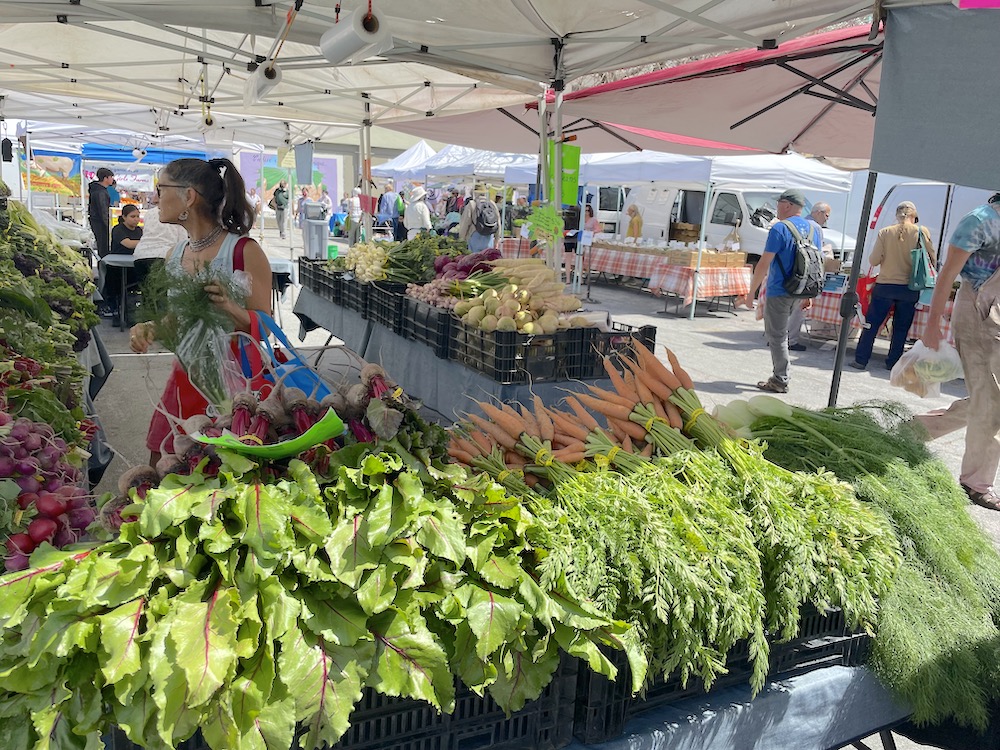
There’s no doubt that the challenges of the past two years upended our old ways of thinking and being. One of the dramatic changes locally has been the re-discovery of the Santa Cruz Community Farmers’ Markets, with many new customers making farmers’ markets a shopping habit.
During the pandemic, farmers’ markets became a go-to for many shoppers who were seeking healthy organic produce and other goods in a safe outdoor setting. Customers also were able to connect with local farmers, chefs and vendors selling quality products, and support their efforts by buying their wares. We’re happy to report an upsurge of pandemic shoppers continue to patronize the SCC Farmers’ Markets.
The popular farmers’ markets in Downtown Santa Cruz, Westside Santa Cruz, Live Oak, Scotts Valley and Felton have become even bigger draws during the pandemic as a safer way to shop that also provides much-needed social interaction.
That sense of community means a lot to SCCFM executive director Nesh Dhillon, who is always searching for ways to make the five certified farmers’ markets fresh and exciting for the people who attend them. During the pandemic, entertainment and activities at the markets had to be paused; but now, live music and other fun activities are once again going strong.
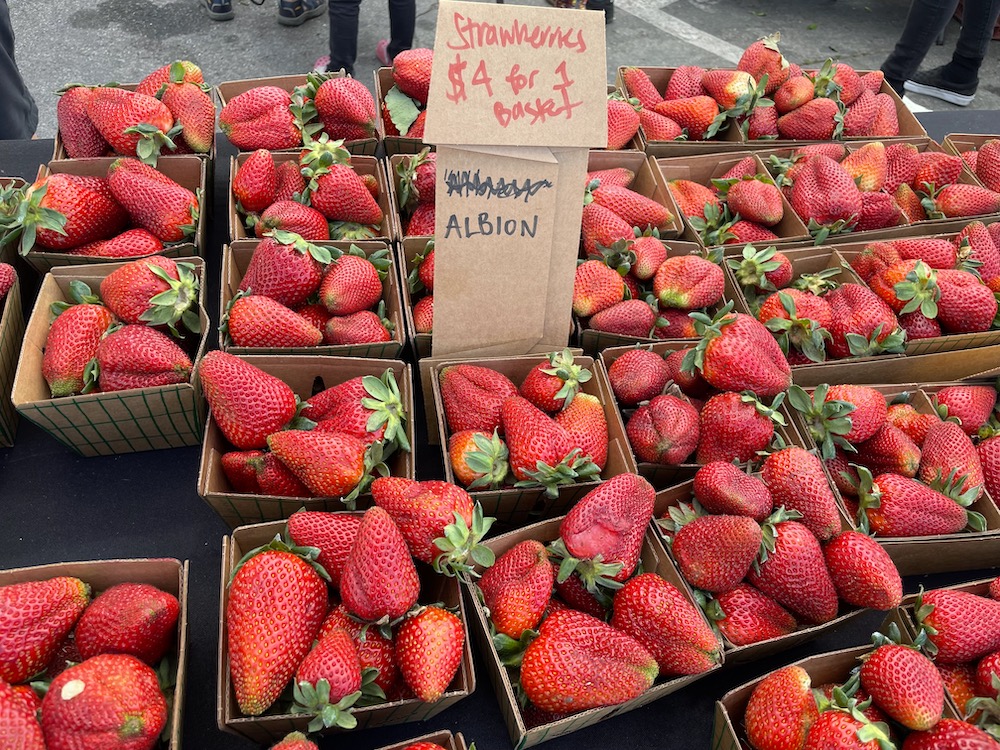
Of course, the main attraction is the best in regional organic produce, pasture-raised meats, eggs and dairy, sustainably harvested seafood and artisan-made goods. That has been joined by a wealth of prepared foods, meal kits and gourmet products by acclaimed local chefs at the markets.
In addition, live music is an integral part of the Westside, Live Oak, Felton and Scotts Valley markets, showcasing both local and traveling musicians carefully chosen by a music coordinator for a great aural backdrop to the markets’ hustle and bustle.
“It’s like little concerts that people can go to, and it’s all free,” says Dhillon. “It’s really creative, interesting music.”
Also back are FoodShed events, a collaborative educational project involving farmers, food artisans, community-based organizations and local chefs, in a limited series at the Felton and Scotts Valley markets. Wreath making, apple pressing and pumpkin decorating are planned for later this year, Dhillon says. Face painting is another activity being offered once more at the markets.
The Scotts Valley market is once again undergoing changes, but Dhillon says it’s all change for the better. The seasonal market, previously at the old Kmart parking lot, will reopen at the Boys & Girls Club parking lot at 5060 Scotts Valley Drive.
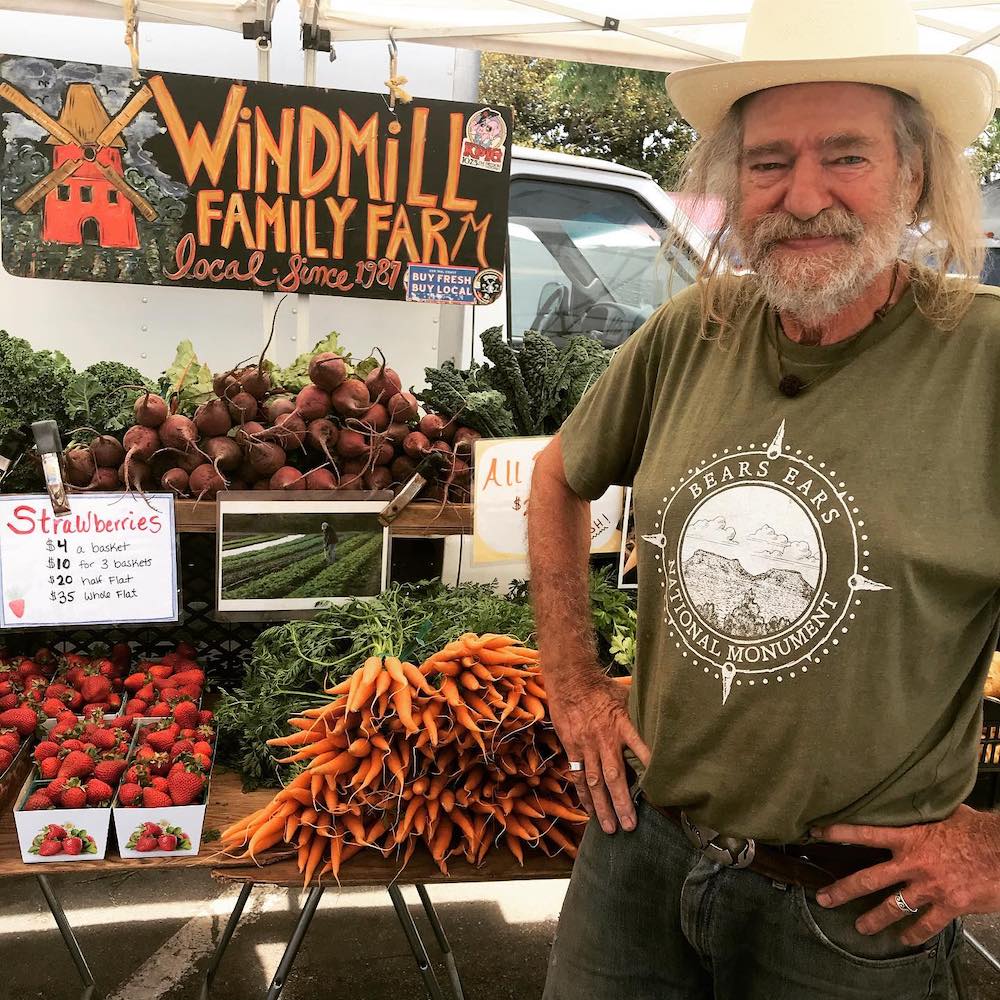
Dhillon says this new setting is a perfect opportunity to draw more parents and kids to the market, since the Boys & Girls Club will be hosting family-friendly activities to keep children entertained while their parents shop. As Dhillon notes, “This area is a real community hub, with Scarborough Lumber, Ace Hardware and Scotts Valley Car Wash all right there.”
Scotts Valley and Felton markets are seasonal, running May through November, with Felton reopening on Tuesday, May 3, and Scotts Valley on Saturday, May 7.
At the year-round Downtown and Westside markets, there will be a continued emphasis on chef-prepared foods and artisan products, and convenient grab-and-go foods that people can take with them. The SCCFM developed strong partnerships with local chefs during the height of the pandemic, many of who had to close their restaurants but still needed to make a living.
When these chefs began offering ready-made meals and heat-and-eat dinners at the SCC markets, shoppers responded enthusiastically. It’s been such a positive addition that many chefs are continuing to sell these items at the markets even though they’ve been able to re-open their restaurants.
Farmers market shoppers will find prepared foods from Brad and Linda Briske (HOME), Katherine Stern (The Midway), Andy Huynh (Full Steam Dumpling) Jessica Yarr (Chicken Foot), and Anthony Kresge (Reef Dog Deli) among others. Artisanal pizza by Jane Doe’s popup has also been a big seller recently.
“It’s such a great outlet for them,” says Dhillon. “It’s a way to market and promote their restaurants, to try things out without a lot of extra cost. It grew out of a need to support local chefs and then it turned into another thing.”
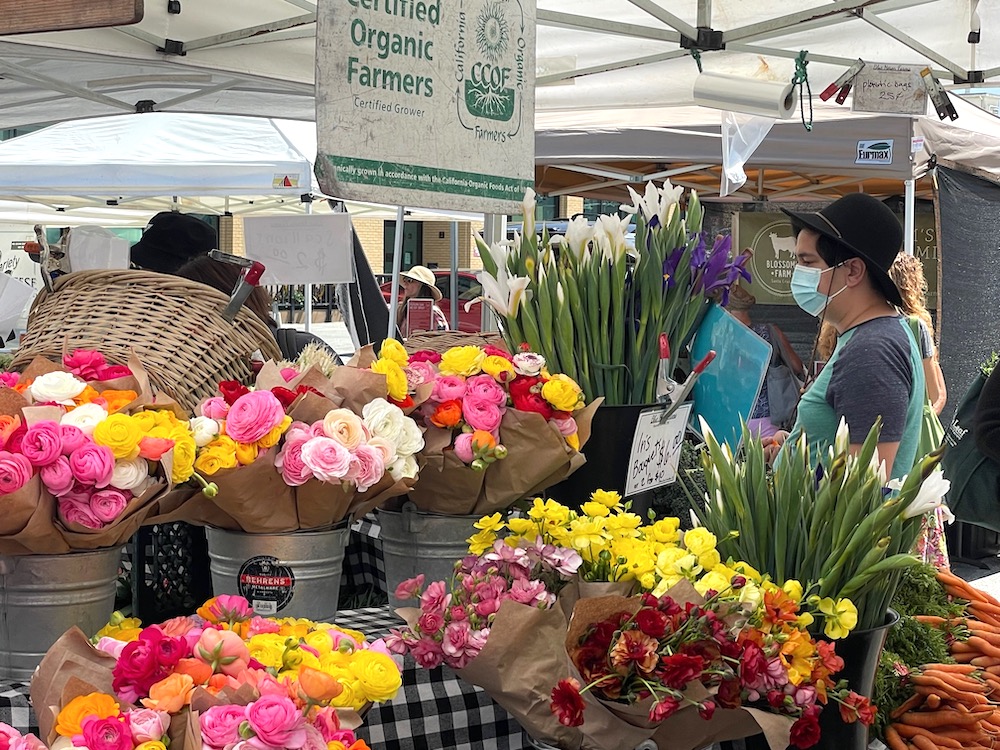
Dhillon also attributes the increased turnout at the markets to the CalFresh benefit match, which low-income residents can use to buy fresh produce. Although COVID-related grants from federal and local sources will end soon, SCCFM is working to find funding that will continue to help these shoppers, who range from UCSC students to seniors on a fixed income.
“Our CalFresh redemption rates are usually No. 1 or 2 in Northern California,” says Dhillon, a sign that outreach and education have worked in letting the public know that this important benefit is available.
When shoppers use an EBT card at the markets, depending on the market and the month, they will be double- or triple-matched, so that shoppers have more dollars to spend at the markets on fresh, nutritious fruits and vegetables. “It’s a huge incentive—it draws tons of people to the markets,” says Dhillon. “There’s no downside to the program. Farmers get their money, and the markets get busier and more robust.”
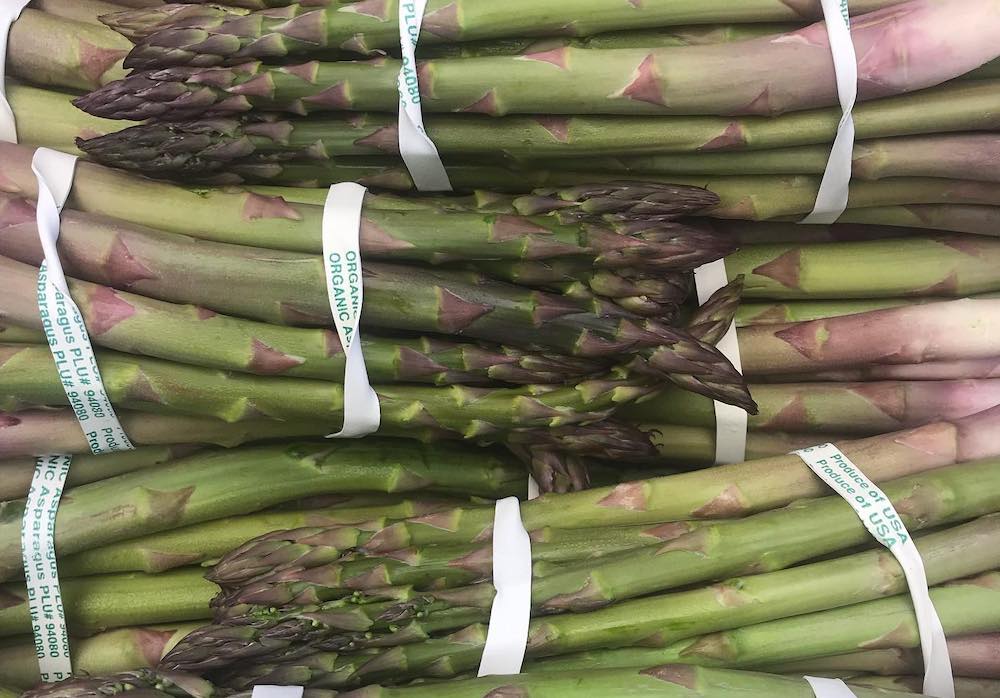
It’s spring vegetable season at the markets, with asparagus, greens, leeks and fennel to be found at their freshest and best. To find out what’s in season and what will be available in the coming weeks, go to santacruzfarmersmarket.org/seasonality.
Santa Cruz Community Farmers’ Markets • Live Oak, Su 9am-1pm; Felton (reopens May 3), Tu 1-6pm; Downtown Santa Cruz, Wed 1-5pm (April) and 1-6pm (May-Oct); Westside Santa Cruz, Sa 9am-1pm; Scotts Valley (reopens May 7), Sa 9am-1pm • santacruzfarmersmarket.org
About the author
Kathryn McKenzie, who grew up in Santa Cruz and now lives on a Christmas tree farm in north Monterey County, writes about the environment, sustainable living and health for numerous publications and websites. She is the co-author of “Humbled: How California’s Monterey Bay Escaped Industrial Ruin.”
- Kathryn McKenziehttps://www.ediblemontereybay.com/author/kamckenzie/
- Kathryn McKenziehttps://www.ediblemontereybay.com/author/kamckenzie/
- Kathryn McKenziehttps://www.ediblemontereybay.com/author/kamckenzie/
- Kathryn McKenziehttps://www.ediblemontereybay.com/author/kamckenzie/



